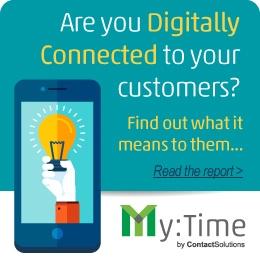 Organizations build systems to deliver desired outcomes in a repeatable, predicable and scalable manner. Most of the time these systems are good things that are downright essential to the success of the enterprise. But what happens when customers change faster than you do? They become harder to engage, and that can wreak havoc on your customer engagement strategy if the changes necessary to meet new customer expectations clash with your internal systems.
Organizations build systems to deliver desired outcomes in a repeatable, predicable and scalable manner. Most of the time these systems are good things that are downright essential to the success of the enterprise. But what happens when customers change faster than you do? They become harder to engage, and that can wreak havoc on your customer engagement strategy if the changes necessary to meet new customer expectations clash with your internal systems.
Designed for Predictability, not Change
Often the enterprise is slow to change and careful not to disrupt the systems it has built up to make its success predictable. This might be fine when the market environment and customers are also slowly changing, but it can create problems when the market is dynamic. For example, digital and mobile are having a dynamic and disruptive impact on many markets that were once rather predictable.
One way to approach the slow-to-change problem is to view it as two overlapping modes of operation.
 Mode 1 is a relatively slow mode business unit that values business-critical performance and predictability. Innovation occurs on a much more deliberate pace for this business.
Mode 1 is a relatively slow mode business unit that values business-critical performance and predictability. Innovation occurs on a much more deliberate pace for this business.
Mode 2 is the future state of the customer that centers on digital and mobile-- and is very dynamic. A high degree of uncertainty exists as customers and markets evolve at a rapid pace. Innovation occurs very quickly in this space.
The overlap is a highly valuable space where the core business adds business maturity to the digital business and the digital business adds innovation to the core business. For example, at Contact Solutions our core business adds high reliability and scalability to our digital business. Our digital business has added advanced cross-channel analytics to our core business.
From an IT perspective, Gartner refers to this dual set of challenges as Bimodal IT, and we can also apply some of this thinking to the business as a whole. Gartner defines bimodal as-
"Bimodal" refers to having two modes of IT, each designed to develop and deliver information- and technology-intensive services in its own way. Mode 1 is traditional — emphasizing safety and accuracy. Mode 2 is exploratory — emphasizing agility and speed. Each mode has all the people, resources, partners, structure, culture, methodologies, governance, metrics, and attitudes toward value and risk that its operation requires. New investments are deployed through one of the two modes, depending on the balance of needs. When the balance changes, existing investments and operations move between the two modes.
The Gartner approach also splits the business into two modes of thinking, just as we have done at Contact Solutions.
Bimodal Approach to Customer Engagement Strategy
Such a bimodal approach can also be used in your approach to customer engagement strategy. Consider customer care, one of the three rings of customer engagement. Our enterprise customers have made significant investments in contact center infrastructure, processes and systems needed to provide customer care. These contact center systems work and, for the most part, have not seen significant change for many years. They are clearly operating in Mode 1, with only minor enhancements and upgrades over the years.
The widespread adoption of mobile is a market catalyst that challenges the traditional systems of customer care and their role in a broader customer engagement strategy. It clearly has the potential to disrupt Mode 1 systems, and it has already begun to do so.
Create a Mode 2 Team to Spark Innovation
Many of our customers are using mobile strategically to change the Mode 1 paradigm. Most of them use a bimodal approach to implement mobile for customer care, with an eye towards improving customer engagement across the board. They first carve out a team that will operate with Mode 2 rules (learn fast, experiment often, adapt quickly) and test new mobile engagement strategies with a pilot set of customers. They meticulously measure results so they can understand the impact across as much of the customer journey as possible—not just customer care. Once the mobile engagement strategy results look promising and repeatable, they begin the process of integrating it to their Mode 1 systems.
This approach has been successful in helping enterprises manage the clash between predictable systems and fast-moving changes that will inevitably disrupt them. If you’re feeling this clash as you try to change as quickly as digital consumers’ expectations, consider taking a bimodal approach that can help you transition your Mode 1 customer care systems to include a successful Mode 2 digital engagement strategy.



